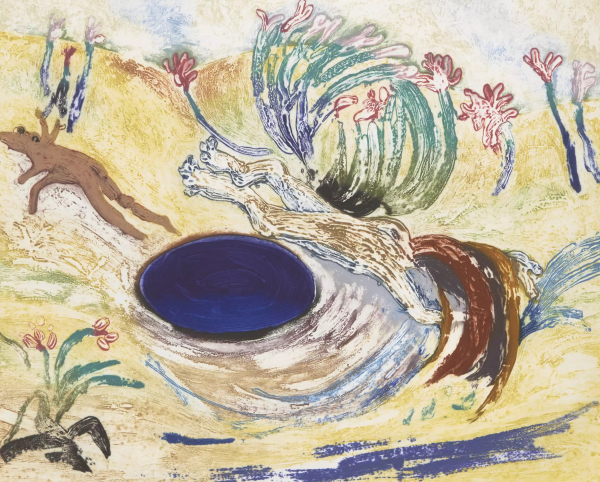Arthur Boyd, a renowned Australian printmaker, painter, and potter, was born on July 24, 1920, in Murrumbeena, Australia. Throughout his illustrious career spanning the mid to late 20th century, Boyd's art became synonymous with his deep connection to Australia and explored universal themes of love, loss, and identity.
Coming from a family of artists, Boyd was immersed in the world of art from an early age. His lineage included notable painters, sculptors, architects, and other arts professionals, with his grandparents, Emma Minnie Boyd and Arthur Merric Boyd, setting the artistic foundation. His parents, Merric and Doris Boyd, continued this creative legacy.
Boyd's artistic journey began when he attended night classes at the National Gallery School in Melbourne, where he was introduced to influential writers like Dostoyevsky by Yosl Bergner, a Jewish immigrant artist. These encounters left a lasting impact, shaping Boyd's social conscience and humanitarian values, which became recurring themes throughout his artwork. Inspired by the European refugees he encountered in inner-city Melbourne during the late 1930s, Boyd embarked on a distinct period of depicting fanciful characters in urban settings.
During World War II, Boyd served in the militia from 1941 to 1944. The wartime experiences and his expressionistic style found expression in his paintings during this period, capturing the emotional intensity and turmoil of the era.
After the war, Boyd established the Arthur Merric Boyd Pottery Workshop in Murrumbeena, a space that became a vibrant hub for his creative exploration. His pottery, ceramic painting, and sculpture endeavors added a new dimension to his artistic repertoire. The distinct style and techniques showcased in his ceramic paintings, such as those displayed at Roseberys, embodied his fascination with representing figures and conveying profound themes of love and loss.
In the 1950s, Boyd embarked on a transformative journey through central Australia, where he witnessed the harsh conditions endured by Aboriginal people. The profound impact of this experience compelled Boyd to create his seminal series of 31 paintings titled "Love, Marriage, and Death of a Half-Caste," also known as "The Bride." These thought-provoking artworks brought attention to the marginalization of Aboriginal people, elevating social issues through the powerful language of art.
In 1959, Boyd and his family relocated to London, where he continued to depict his beloved Australian homeland through his artwork, often capturing the essence of its enchanting bush settings. However, his time in England didn't diminish his connection to Australia; instead, it enriched his artistic perspective. In 1971, Boyd returned to Australia after receiving a Creative Arts Fellowship from the Australian National University, solidifying his position as one of Australia's most highly regarded artists.
Boyd's immense contributions to the art world were recognized when he generously donated several thousand works, including pastels, sculptures, ceramics, etchings, tapestries, paintings, and drawings, to the National Gallery of Australia in 1975. This act solidified his artistic legacy and ensured his enduring impact on future generations.
Throughout his career, Arthur Boyd's artistic journey was deeply intertwined with his Australian heritage. He played a pivotal role as a central member of the Angry Penguins, an artistic group that sought to challenge and disrupt the established Australian cultural establishment. Additionally, Boyd was associated with the Antipodeans, a collective founded in 1959, which championed figurative art during a time dominated by abstract art.
In addition to his artistic pursuits, Boyd was known for his philanthropy. In 1993, alongside his wife Yvonne Boyd, he donated family properties spanning 1,100 hectares (2,700 acres) at Bundanon on the Shoalhaven River to the people of Australia. This exceptional act of generosity included further donations of properties, artwork, and the copyright to all of his work.
Today, the works of Arthur Boyd can be found in prestigious collections worldwide, including the Victoria & Albert Museum, the Arts Council of Great Britain, the Museum of Modern Art in Melbourne, the National Gallery of Queensland in Brisbane, and the National Gallery of Victoria in Melbourne, among many others. His art continues to inspire and captivate art enthusiasts, and his profound contributions have solidified his status as one of Australia's most influential and celebrated artists.
